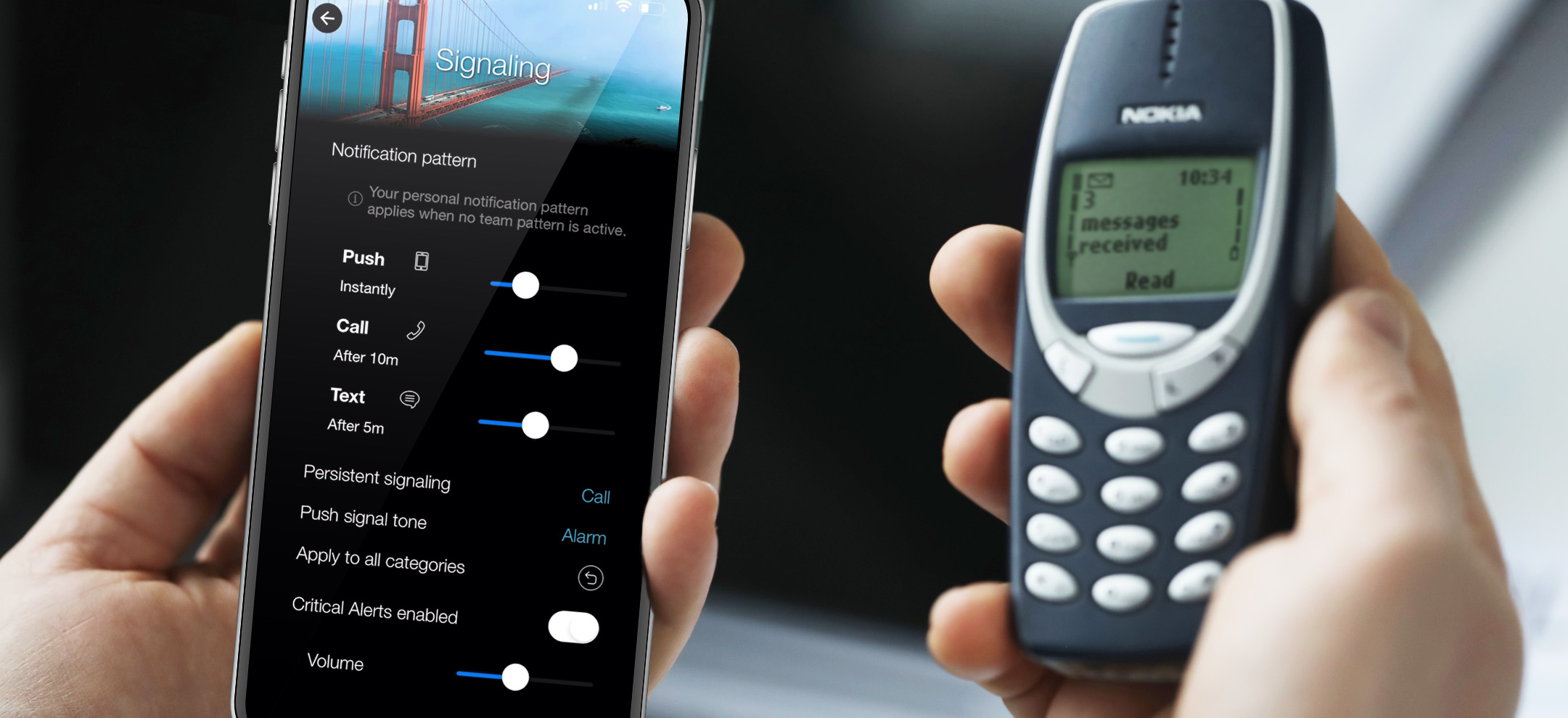In the world of IT monitoring and IoT systems, it is crucial to alert users promptly and reliably about critical issues. Whether it’s about security and ongoing systems at the workplace, in public facilities, or other places, the way in which alarm notifications are delivered can make the difference between chaos and an organized response in an emergency.
For a long time, SMS, along with email, was considered the standard solution for such alerts. This was primarily because both methods work on almost any device, are easy to use, enable reliable message delivery and are also cost-effective. The widespread use and accessibility of SMS and email make them a universal means of communication. Although SMS alerts are widely used, they come with significant disadvantages that affect the efficiency of critical alert management.
Overvome the limitations of SMS alerting
Given these challenges, it is important to carefully consider the pros and cons of various alerting methods. Below, we present a detailed comparison that highlights the limitations of SMS-based alerting and the enhanced capabilities of SIGNL4, an innovative mobile alerting app.
| Disadvantages of SMS Alerting | How SIGNL4 Solves It |
|---|---|
| Limited awareness due to a single communication channel (a beep), leading to potential missed alerts | Multiple communication channels (App push, calls, SMS) and persistent alerting ensure more reliable delivery and awareness of alerts |
| No read receipts, resulting in unclear alert status | Targeted alerts with acknowledgment capability: Alarms can be acknowledged within the app, providing visibility into who is handling each incident |
| Difficulty in keeping track of alerts; important alerts get lost in the flood | Clear overview of all critical and open alerts, along with user notes for improved collaboration |
| 160-character limit and lack of multimedia support | Rich multimedia content (text, links, images, videos, location) for comprehensive information sharing, ensuring clear problem understanding and access to relevant additional information |
| No automated escalation processes for unanswered alerts | Automated escalation processes if persistent alerts are not acknowledged in a timely manner, ensuring no critical alerts go unnoticed |
| Lack of insight into available staff; shift scheduling needs to be done in another system | “Who’s on duty” view and the ability to involve available staff; integrated shift and duty scheduling |
| Lack of team interaction | Visibility of available team members, chat, and direct contact within the SIGNL4 app for alert-related communication |
| High costs for international communication and uncontrolled message floods | Subscription model with transparent pricing without concerns about the number of connected systems or incoming alerts |
| Lack of accountability when the SMS goes to the entire team (Who takes responsibility?) | Targeted alerting based on predefined criteria for efficient alert processes |
| No end-to-end encryption | Critical data is encrypted |
| Complicated integration with other systems | Seamless integration with existing and future systems through a flexible API and numerous examples |
All these points make it clear that in areas where reliability and functionality are crucial, there should be an increasing reliance on modern communication solutions. The delivery of alert notifications, whether through SMS or other means, is not always guaranteed. Technical issues, poor network coverage or system overloads can lead to delays or even failures of alerts, both with SMS and alternative communication methods. Therefore, relying solely on one communication channel, such as SMS, can pose risks.
Introducing SIGNL4: a revolutionary approach to mobile alerting
SIGNL4 offers a mobile app, providing a reliable and efficient solution for mobile alerting. In this way, it overcomes the limitations of traditional SMS alerting. By combining various channels like SMS, push notifications and calls, the likelihood of the alert message reaching the relevant person is increased, even under challenging conditions. Each channel has its own strengths: SMS is known for its simplicity and reach, push notifications offer interactive elements and calls enable direct, voice-based communication. The combination of these methods ensures that critical information is conveyed in the most effective way.
However, SIGNL4 goes even further. The customizability of sounds and the visual representation of alerts helps to better assess their urgency and respond accordingly. This software solution provides detailed insights into alerts and response times, which is essential for the continuous improvement of processes. SIGNL4 is flexibly configurable and adapts to the specific needs of businesses of all sizes, from small teams to large corporations. The intuitive interfaces of the app and web portal enable the quick and effective handling of critical alerts.
You can easily handle the scheduling through the web browser. Targeted alerting then occurs based on on-call status, role, or availability. Employees are automatically enrolled for their shift in the app and receive all relevant alarms on their mobile device. Here you can find all the details.
Another crucial advantage of SIGNL4 is its ability to function independently of the network. This means that alerts can still be sent even if your on-premises tool does not have an internet connection. This feature is particularly useful in scenarios where website checks or heartbeats are conducted, ensuring that critical alarms are reliably transmitted even in network outage situations.
Conclusion
Although there are still use cases for SMS, it’s time to consider better alternatives or expand alerting capabilities for critical processes that require reliable notifications. SIGNL4 stands out as a robust and efficient solution for modern alerting needs. It offers multiple communication channels via app and voice call, as well as SMS. It offers persistent and targeted alerting based on scheduling, escalation processes and a clear overview of alerts.
Curious? You can try SIGNL4 for free for 30 days.

